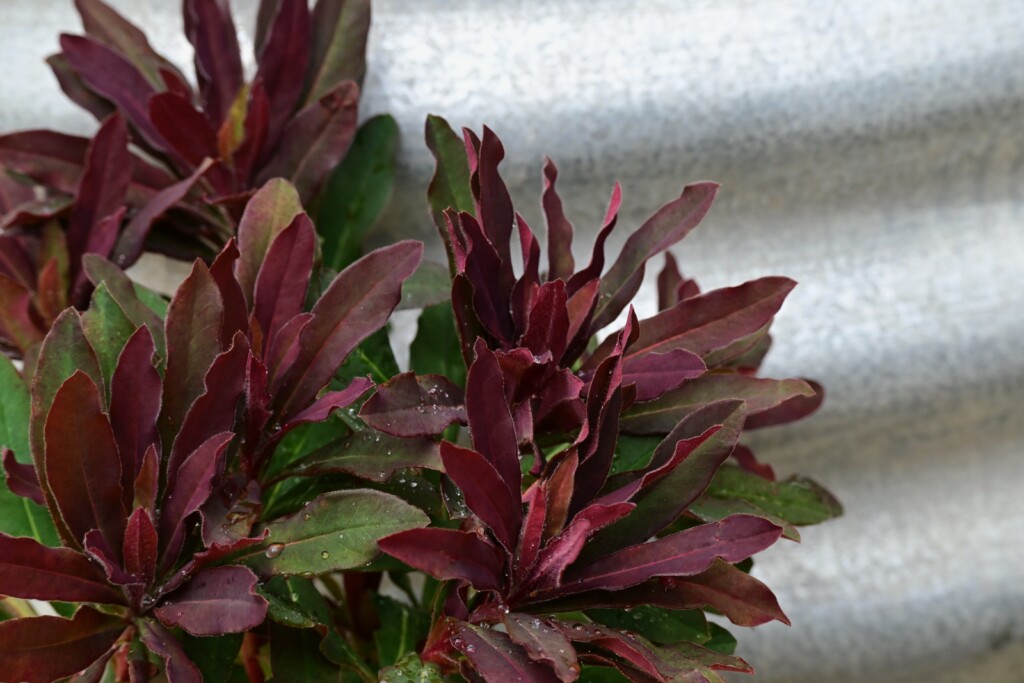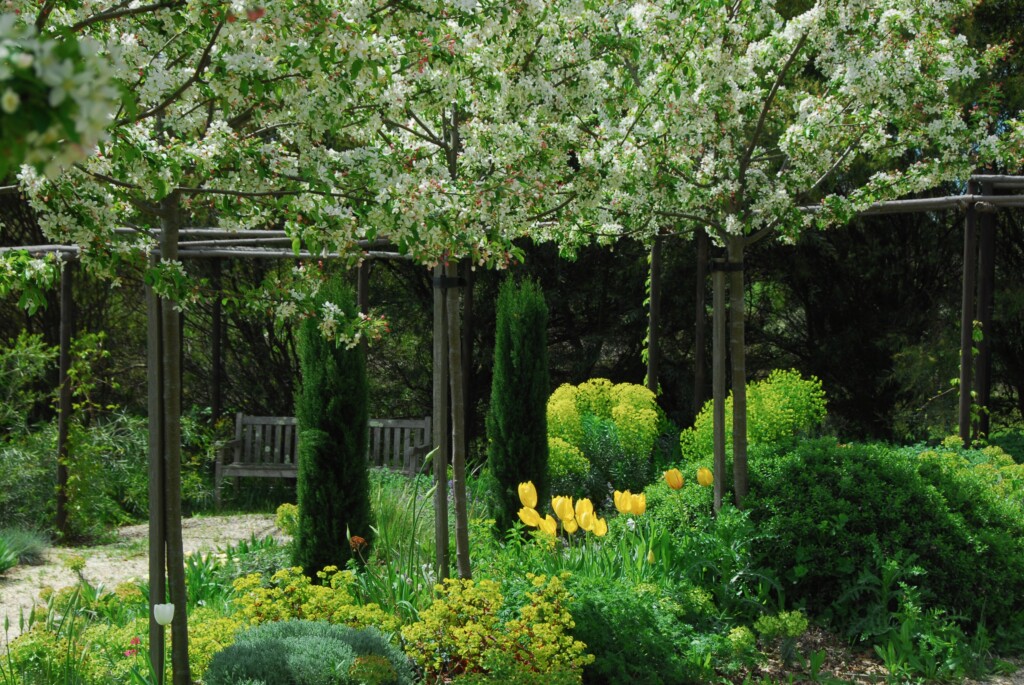It’s all too rare in this age of plants with huge glossy labels for a new release to totally eclipse its horticultural predecessor. It seems like the imperative for the novel and the new trumps true discernment, and the older, proven plant so often outlasts and outperforms the super-hyped newcomer.
But the same cannot be said about the reasonably recent introduction Euphorbia amygdaloides ‘Craigieburn’, which effortlessly supersedes any previous form of Euphorbia amygdaloides ‘Purpurea’.
The latter plant, carrying deep plum foliage and lime flowers atop plum-suffused stems was always irresistible to me, despite its faults. I’d just try not to look too hard at it in mid winter when its leaves would often curl as if trying to keep warm, and when it became visually unbalanced and a little threadbare after periodically shedding all its old leaves.
Then along came Euphorbia ‘Craigieburn’, addressing all of these issues. The sumptuous plum foliage up to 30cm tall stays bravely open and relaxed throughout the year, and retains a density that its parent plant never did. Flowering is prolific and wonderfully even, creating, at best, a solid, 60cm tall mound of lime-sherbet so dense that you can’t help but wonder how the plant itself is photosynthesising under all that.

Which may contribute to its one remaining fault, and that it’s not very long lived. Neither, however, was any form of Euphorbia amygdaloides ‘purpurea’. Indeed, the same could be said for virtually any of the sub-shrubby euphorbias. While the totally herbaceous forms can go on indefinitely (such as E. palustris, E. amygdaloides var. robbiae’ (read more about that here), E. griffithii, E. polychroma etc) as they totally renew themselves at or below ground level, those that reshoot each year from the same, eventually cluttered ‘stump’ (E. characias ‘wulfenii’, E. rigida, E. myrsinites, E. amygdaloides ‘Purpurea’) all seem to run out of steam in three to six years.

Euphorbia ‘Craigieburn’ would like a little more water than I can give it, which is none. Three plants lasted two or three years at my place (which is on the cooler side, with reasonable rainfall) with no supplementary water, but they’d want a little extra – but only a little – in, say, Central Victoria, inland NSW, or Melbourne. That, to my mind, puts it in the ‘very drought tolerant’ category.
No low-growing euphorbia likes being swamped by the growth of nearby plants. In fact, Euphorbia ‘Craigieburn’ never seems happier that when in a gravel garden setting, with a little space around it. It’ll jostle up to surrounding plants as the pics at the top and bottom of this piece show, but won’t cope with being subsumed. And like nearly all drought tolerant plants, it insists on excellent drainage. Maintenance goes no further than dead-heading flowered stems right back to the ground.

The other consideration, of course, is that you can really overdo this deep plum foliage. It needs to be like the occasionally-used base note, or the seasoning. Having said that, there’s hardly a more desirable and hard-working plant that E. ‘Craigieburn’ to provide it.
(As when working with all Euphorbias, you should wear gloves and long sleeves – the sap on the skin (and now, for me, gentle abrasion from the pointed-leaf species like E. rigida) will result in irritation and the appearance of burns. After two clients of mine have had sap sprayed into their eyes while dead-heading Euphorbia characias ‘wulfenii’, causing severe pain and hospitalisation, I’ve taken to wearing protective glasses as well when working around these plants. But none of that has made me even consider not using them)

Hi
I visited your site. I read your blog post. Very usefully written. All information is very nice. Iam so glad.I l like.
welcome!
Hi Michael, agree with everything you describe about ‘Craigieburn’. The dry heat of summer here doesn’t bring out its best qualities. But late winter/early spring the depth of its colour is glorious. It looks particularly beautiful in combination with Helleborus Boughton Beauty. (Just a pity I have been neglectful of its need to be replenished every 2-3 years!)